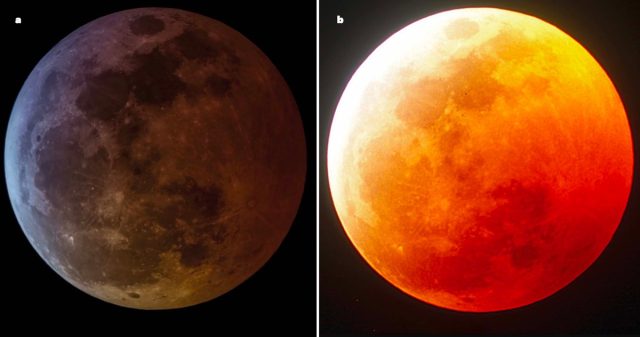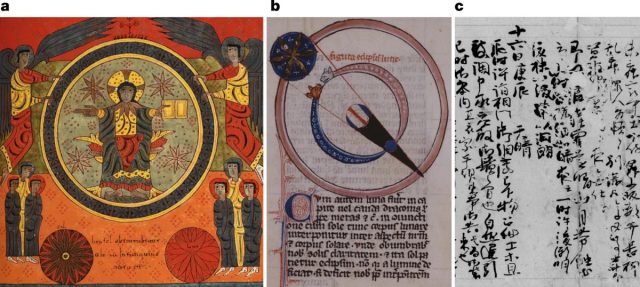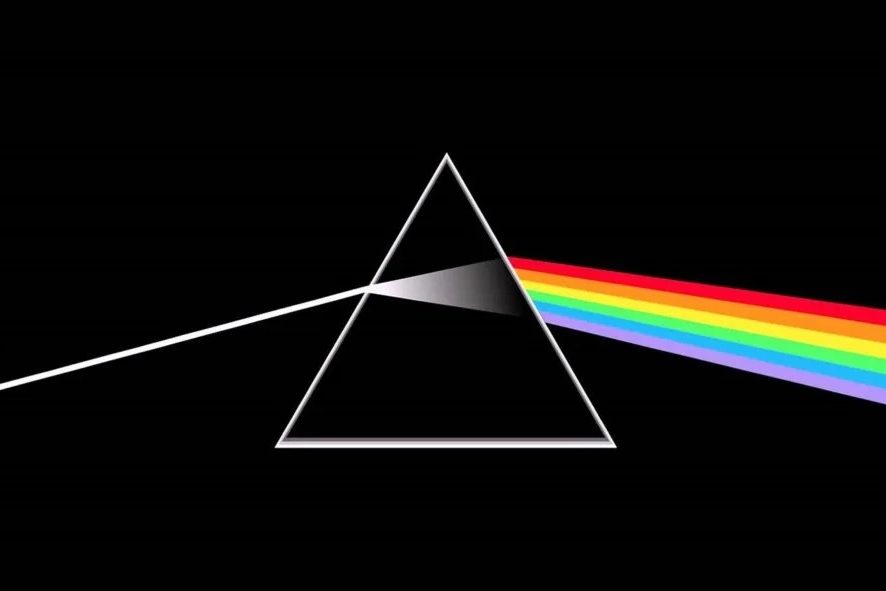
Sébastien Guillet, an environmental scientist at the University of Geneva in Switzerland, was rocking out to Pink Floyd's classic Dark Side of the Moon album one day when he made a prescient connection. The darkest lunar eclipses all occurred within a year or so of major volcanic eruptions. And astronomers know the exact days of those eclipses. So medieval historical accounts of lunar eclipse sightings should be able to help scientists narrow down the time frame in which major eruptions occurred during the High Medieval period spanning 1100 to 1300 CE. Guillet collaborated with several other scientists to conduct such a study, combining textual analysis with tree ring and ice core data. They described their findings in a new paper published in the journal Nature.
"Climate scientists usually identify past volcanic eruptions by measuring the acidity and amount of volcanic ash in cores drilled from polar ice, or by inferring abrupt temperature changes in tree ring records," Andrea Seim (University of Freiburg) and Eduardo Zorita (Helmholtz-Zentrum Hereon) wrote in an accompanying commentary. "However, these sources sometimes disagree, because the location, intensity, and timing of eruptions can produce varying results, as can circulation of the atmosphere. Guillet and colleagues' approach offers an independent—and perhaps even more direct—source of information about the timing of volcanic eruptions, which could resolve some of these disagreements."
Major eruptions can belch huge amounts of sulfur dioxide into the atmosphere, which gets converted into aerosols in the stratosphere. This produces volcanic dust. That dust then blocks incoming solar radiation, changing the Earth's surface temperatures, precipitation, and atmospheric circulation. Climate models suggest that this kind of volcano-induced cooling of about 1° Celsius over several years can lead to unusual precipitation patterns: major flooding in one area and droughts in another. It could also lower ocean temperatures and expand sea ice, so the effects could last decades or more. In fact, there has been speculation that major volcanic eruptions during the High Medieval period may have contributed to the onset of the Little Ice Age (circa 1300-1850).
Guillet's critical insight stems from the impact volcanic eruptions can have on the appearance of a lunar eclipse. If there are a lot of aerosols, the moon will appear dark during the eclipse; if aerosols are scarce, the moon will have a bright reddish appearance. So one should be able to estimate how much volcanic aerosols were in the atmosphere from medieval descriptions of the colour and luminosity of the moon during lunar eclipses, and use that information to more accurately date medieval volcanic eruptions.

“We only knew about these eruptions because they left traces in the ice of Antarctica and Greenland,” said co-author Clive Oppenheimer of the University of Cambridge. “By putting together the information from ice cores and the descriptions from medieval texts we can now make better estimates of when and where some of the biggest eruptions of this period occurred.” That timing matters because the season when an eruption occurs can influence the spread of volcanic dust and the resulting cooling and other climate anomalies associated with that eruption.
Given that the Book of Revelations in the Bible warns of a blood-red moon appearing in the end times, medieval monks tended to take special note of the moon's colouration in their observations of the night sky. But they weren't the only ones, per the authors. Chinese and Korean astronomers carefully recorded lunar eclipses in astronomical treatises and official dynastic histories. In the Arab world, lunar eclipses were recorded in universal chronicles, while Japanese observations of these events were recorded in the diaries of courtiers, chronicles, or temple records. One of the best accounts was that of the Japanese scribe Fujiwara no Teika, who described a dark lunar eclipse he observed on December 2, 1229:
Regarding the recent total lunar eclipse, although on previous occasions there has been totality, the old folk had never seen it like this time, with the location of the disk of the Moon not visible, just as if it had disappeared during the eclipse. Moreover, the duration was very long, and the change was extreme. It was truly something to fear. Indeed, in my 70 years I have never heard of or seen [such a thing]; the official astronomer spoke of it fearfully.
Of the 64 total lunar eclipses known to have occurred between 1100 and 1300, medieval chroniclers documented 51, and in five of those cases, the moon was described as being exceptionally dark. Guillet et al. also closely examined 15 specific volcanic eruptions, one of which occurred in the mid-13th century and was on par with the 1815 Tambora eruption that brought on 1816's "year without a summer."

The authors linked several dark lunar eclipses—in May 1110, January 1172, December 1229, May 1258, November 1258, and November 1276— to stratospheric dust veils stemming from major volcanic eruptions, based on polar ice chronologies. Tree ring records enabled them to refine the timing even further. They found that five other eruptions were likely associated with aerosol dust veils only in the troposphere, and these did not seem to have much of an effect on climate.
Guillet et al. admit that the study's methodology does have its limitations, given that the visibility of lunar eclipses varies both geographically and meteorologically. However, "Our dataset offers a new, reliable and independent suite of chronological tie points that can complement established age markers," they concluded. And as Seim and Zorita pointed out in their commentary, a better understanding of how these kinds of perturbations can affect climate will help scientists refine their climate models in the future.
DOI: Nature, 2023. 10.1038/s41586-023-05751-z (About DOIs).



3175x175(CURRENT).thumb.jpg.b05acc060982b36f5891ba728e6d953c.jpg)

Recommended Comments
There are no comments to display.
Join the conversation
You can post now and register later. If you have an account, sign in now to post with your account.
Note: Your post will require moderator approval before it will be visible.